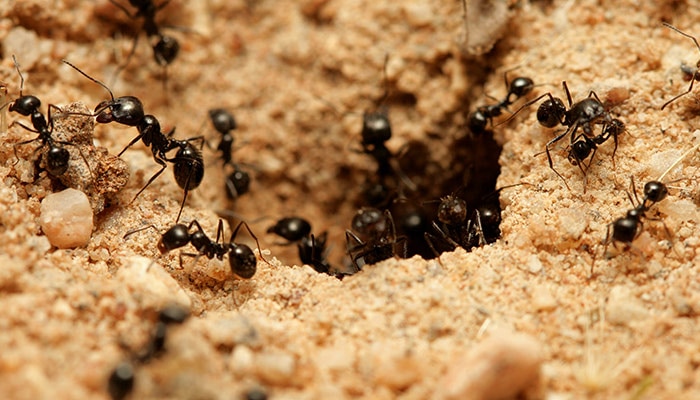While we believe that the books and resources recommended may be of value to you, keep in mind that these are suggestions only and you must do your own due diligence to determine whether the materials are appropriate and suitable for your use. PNC has no sponsorship or endorsement agreement with the authors or publishers of the materials listed.
HABITATS

Giant Anthill
Children will make a paper model of an anthill.

Lesson Objective
Children will learn about ants and how they live in an anthill, which is an ant habitat.
Science
What You'll Need
- Large roll of brown butcher paper
- New, unsharpened pencils with erasers – 1 per child
- Black tempera paint – 1 bottle
- Small paper plates – 1 per child
- Black crayons – 1 per child plus a few extra
- Masking tape
What To Do
- Cut a giant anthill shape out of the butcher paper.
- Using black crayons have the class help you draw rooms and tunnels all through the anthill.
- Show the children how to dip the eraser end of the pencil into the black paint and make three eraser prints in a row onto the anthill.
- Distribute a pencil and a plate of black paint to each child.
- Let the children make as many ant prints as they like.
- When they are done, have the children wash their hands and put away paint and pencils. This will give the paint time to dry.
- Display the giant anthill in your classroom.
Resources
Home School Resources
Home educators: use these printable lesson PDFs to teach this lesson to your home schoolers. They're available in English and Spanish.
Content Provided By
Common Core State Standards Initiative – These lessons are aligned with the Common Core State Standards ("CCSS"). The CCSS provide a consistent, clear understanding of the concepts and skills children are expected to learn and guide teachers to provide their students with opportunities to gain these important skills and foundational knowledge [1]. Visit the CCSS


